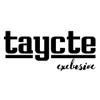Fifty years ago, most Americans had no idea what ramen was.
Today, the long curly noodles, savory broth and cheap price have a place on grocery store shelves and in most consumers' hearts and memories. Many people can recall using a stove, hot plate or microwave to cook the block of dry noodles and having a hot meal minutes later.
In 2019, 106.4 billion servings of ramen were eaten worldwide — working out to 290 million per day — according to the World Instant Noodle Foundation. While people in China and Hong Kong eat the most instant noodles by far, the United States is the world's sixth-biggest consumer of ramen — and the largest outside of Asia.
The American ramen trend started in 1970, when Nissin's Top Ramen first appeared on store shelves. Nissin, which is one of the world's largest instant noodle manufacturers, was founded in 1958 by entrepreneur Momofuku Ando in Japan. After World War II, Ando saw people in Japan struggling to get good food, said Jaclyn Park, Nissin USA's vice president of marketing.
"He wanted to make this very accessible, very delicious, very easy and convenient value meal available to more people. And looking across the globe, there are a lot of people in the United States that could benefit from it," Park said. "So really, he adapted his idea and his vision to include the United States."
This idea to inexpensively feed the world with a fun product became its own category of food and a pantry staple. The coronavirus pandemic contributed to sales spikes, as consumers stocked their pantries for the long haul and easy at-home food. On Walmart's website alone, ramen sales surged 578% between Feb. 21 and March 23, according to a company presentation reported on by Bloomberg. And, Park said, Nissin's ramen brands are here to stay.
From the unfamiliar to everyday
When Top Ramen first appeared in U.S. stores, it was an imported product, crossing the seas from Japan to be sold on grocery shelves. Its name, Park said, referred to its quality: This was the top ramen brand.
Of course, in those days, it was the only ramen brand. And at that point, it likely seemed exotic and strange to consumers. Park said that the convenience, the taste and the pricing likely were the first things that attracted the attention of U.S. consumers. Even if 1970s consumers steered away from more international foods, Park said their love for noodles and flavor quickly brought them to Top Ramen.
"Top Ramen's first flavor in the U.S. was chicken," Park said. "You really can't get more All-American than chicken. It was a great familiar flavor and food because it was chicken and noodles, and from there, the rest is history."
"The common and collective memory of Top Ramen as college food is definitely true, because it is definitely value food, but I think the appeal of Top Ramen is much broader than that. We help all sorts of people from college kids to moms to dads to single people on a budget."

Jaclyn Park
Vice president of marketing, Nissin USA
Top Ramen's key flavors in the U.S. are conventional ones that consumers know and recognize — and may expect to find in many other U.S. soups, including shrimp, beef and vegetable.
A second ramen brand quickly joined Top Ramen on U.S. grocery shelves: Cup Noodles, also made by Nissin. For this brand, the noodles, broth mix and sometimes a small collection of dried vegetables are in a foam cup that is either microwaved or has hot water poured in. According to legend, Ando created this brand in 1971 after seeing Americans eating ramen out of cups because they didn't have bowls large enough for ramen.
While U.S. consumers became interested in trying ramen based on its price point, taste and convenience, Park said Nissin had another strategy to ease the Asian staple into the U.S. market. For some time in the '70s and '80s, the noodles had a more U.S. consumer-friendly brand name: Oodles of Noodles. Park said some Generation X and older consumers still use this former branding as a generic name for ramen.
It definitely took time for U.S. consumers to accept ramen, but Park said persistence on behalf of Nissin, as well as a true consumer need, got it a permanent position in pantries nationwide.
"As Americans got busier, and people were cooking less — that was a phenomenon that started back in the '70s — ... this was going to fill a need," Park said. "...The sales team back in the day — that was led by the Ando family because it's a family-owned business — really focused on that this was a product that really fit the lifestyle needs of American consumers. And with every retailer, it was just kind of chip away at the questions and the doubts and have a really great product."
As the years went by, consumer perception of instant ramen went from an exotic international dish to the most basic budget food. For decades, consumers have been able to buy several packets of ramen for a dollar. Park said that the super-low prices are partially the result of competition, since many brands now crowd grocery shelves.

Considering the good memories many people have of college and young adult life, Park says it isn't a bad thing that many people associate instant ramen with being young and not having much money. After all, emotional connections with food make repeat and lifelong consumers.
"The common and collective memory of Top Ramen as college food is definitely true, because it is definitely value food, but I think the appeal of Top Ramen is much broader than that," she said. "We help all sorts of people from college kids to moms to dads to single people on a budget."
How to innovate a consumer staple
While Nissin's ramen is unequivocally budget food, the company is also trying to elevate the category, Park said. There's much more to ramen than a cheap meal, which Park said is apparent, considering the number of high-end ramen restaurants throughout the United States.
But Nissin's innovations to elevate the category aren't intended to shift it from what consumers think of as an affordable and easy meal. Some of them are just to improve the products and help them meet more consumer needs. One of the most popular, Park said, is Top Ramen Bowl. This product puts Top Ramen, plus some dried vegetables and flavoring, in a disposable bowl — essentially a cross between Top Ramen and Cup Noodles. Top Ramen Bowl costs about $1 — a slightly higher price than a package of Top Ramen noodles, but still inexpensive. Park said this makes Top Ramen more portable. In these days of everyone staying at home, she said, it also lessens the amount of dishes consumers need to wash.

Cup Noodles have also seen upgrades, with new varieties enhancing what's inside the cup. Nissin has started to produce lines under this brand that add a full serving of vegetables, simulate noodles in a restaurant stir-fry dish, and more closely simulate U.S. soup brands with bigger vegetable chunks.
Innovation has also come in the way of renovating the ingredients in the classic Top Ramen package, Park said. This started about five years ago, when Nissin quietly took out MSG and reduced the sodium in order to meet consumer nutrition demands.
Despite the energy put toward innovation, Park said Nissin has no plans to stop making the original noodle block version — which Park called pillows — of Top Ramen or the classic Cup Noodles.
"We never forget the products that got us here and the connection that people have to those products," she said. "What we hope is that that connection and that emotion and that strong feeling that people have for our brands and products under Cup Noodles and Top Ramen translates into a desire to try something new from the brand, because we have that trust."






















